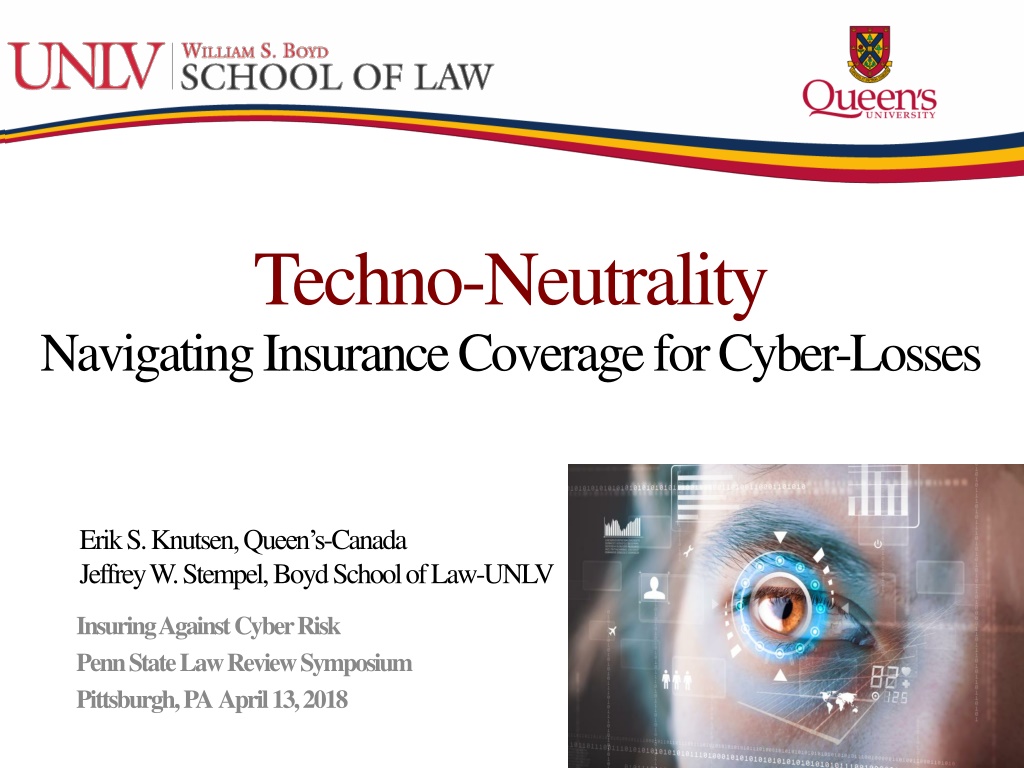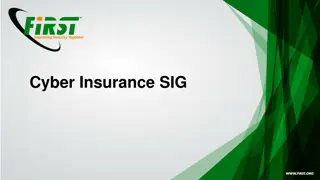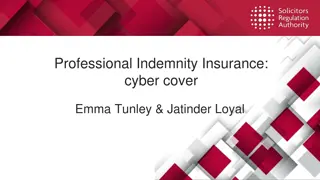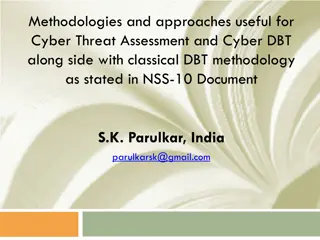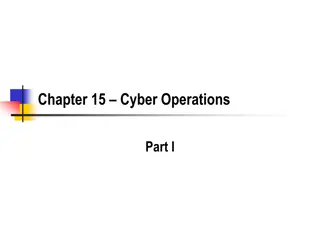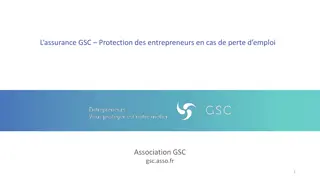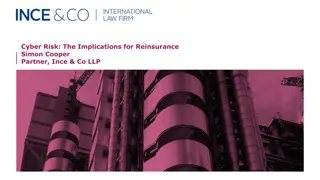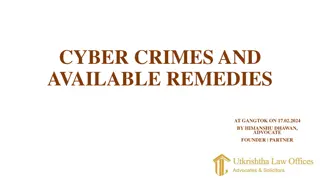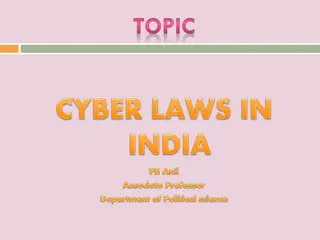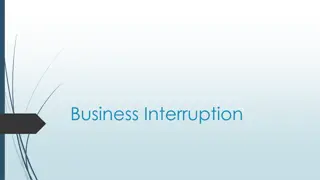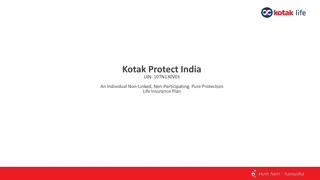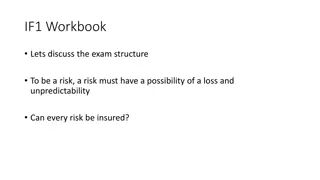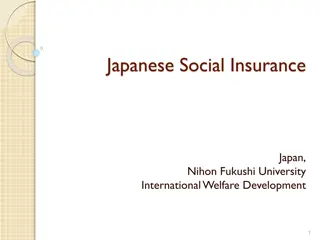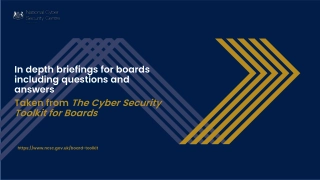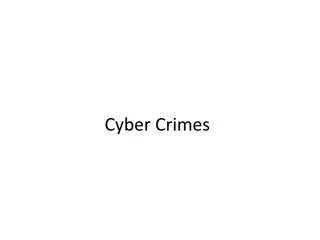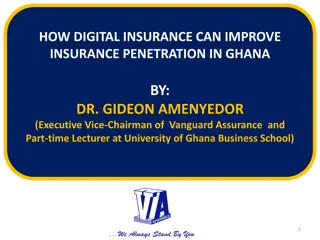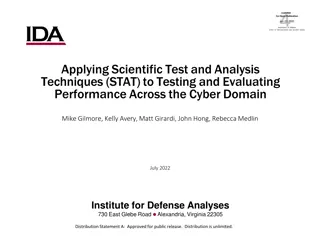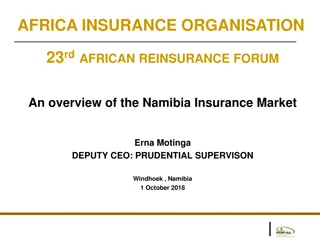Challenges in Cyber-Loss Insurance Coverage Market
The cyber-loss insurance market faces issues such as broad exclusions, physical-digital conundrums, publication and access hurdles, and mismatches in coverage with modern policyholder expectations. These challenges stem from imperfect segmentation, unexpected gaps, and outdated approaches, highlighting the need for a techno-neutral interim solution.
Download Presentation

Please find below an Image/Link to download the presentation.
The content on the website is provided AS IS for your information and personal use only. It may not be sold, licensed, or shared on other websites without obtaining consent from the author. Download presentation by click this link. If you encounter any issues during the download, it is possible that the publisher has removed the file from their server.
E N D
Presentation Transcript
Techno-Neutrality Navigating Insurance Coverage for Cyber-Losses Erik S. Knutsen, Queen s-Canada Jeffrey W. Stempel, Boyd School of Law-UNLV Insuring Against Cyber Risk Penn State Law Review Symposium Pittsburgh, PA April 13, 2018
Outline 1. Problems with the Cyber-Loss Insurance Market 2. Physical-Digital Conundrum 3. Publication and Access Hurdles 4. Market Segmentation Nightmare 5. Reactionary Approach to Cyber- Anything 6. Interim solution: Techno-neutrality
Problems with the Cyber-Loss Insurance Market Broad exclusions for cyber-losses in traditional insurance products: Exclusion for electronic data and data-related liability Imperfectly segmented, patchwork coverage layering: Different product styles (drop-down, add-on, separate) Different, untested coverage wording Unexpected gaps in coverage Not reflective of modern policyholder expectations of coverage Results in Inconsistent coverage jurisprudence
Physical-Digital Conundrum in Cyber-Losses Cyber-losses theoretically insurable losses Yet common losses excluded from standard coverage: direct physical loss to tangible property Crime/bank fraud coverage tied to physical banking world (ie. written checks), not computer use Privacy injury liability coverage tied to what is publication All get tripped up on analogies to corollaries in the physical world.
Physical-Digital Difference? Incongruous - same resulting loss on paper or in physical world is covered; Standard insurance covers a lot of intangible losses: Pollution; Mould; Asbsestos; Long-latency trigger issues
Publication and Access Hurdles Privacy breach not covered in digital form (but would be in physical form): Turns on what is publication? Actual vs. potential access?
Modern Policyholder Coverage Expectation Much of life now necessarily digital: Personal: data, contacts, records, music, photos Commercial: work product, client contacts, software, social media Who could imagine modern commercial or homeowners policies NOT covering property or liability losses from digital aspects of life?
Market Segmentation Nightmare Problems with segmented coverage market: 1. Narrow definition of covered losses; 2. Difficulty shoe-horning claims into pre-determined categories of loss; 3. Questions of coverage scope; 4. Untested insurer-mandated moral hazard mitigation requirements. Result: wild-west coverage experience
Reactionary Approach to Cyber-Anything Problems with analogy, novelty: Physical versus cyber Publication Over-blowing scope and loss potential Terms anchored in the physical world All results in mishmash of jurisprudence Look at experiences with Y2K insurance Example: digital revolution of procedural discovery not safe either!
The Path to Equalization of New Insurance Products 1. 2. Broad, far-reaching interpretation Narrowed reading of terms (coverage denial): Power of analogy, novelty Differentiation arbitrary and unpredictable Piecemeal additions: Separate policies Add-ons, endorsements Drop-down coverage Full integration of new risk in standard product (e.g. Standard pollution exclusion or business interruption coverage; evolution of modern CGL incorporating various coverages) 3. 4.
Risks of Not Incorporating Cyber-Losses Costly gaps in coverage: Inefficient loss transfer to other markets (i.e. broker) Litigation costs rise Coverage nullification arguments: Coverage does not meet expectations of reasonable, modern policyholder Losses of premium revenue for combined widespread product (at slightly higher price)
Techno-Neutral Approach to Coverage Short to medium term solution Techno-neutrality: jettison cyber loss differentiation at interpretation: Responds faster than market in interim Uses existing canons of construction (coverage broad, exclusions narrow) Account for modern reasonable expectations Watch for cyber-specific absurdities (i.e. forcing policyholder to keep paper records to remain insurable) Focus on inherent nature of loss and coverage granted by insurer (risk, fortuity, coverage) Insurers protect themselves through sound underwriting: Policy limits, retentions or deductibles, premium pricing
Benefits of Techno-neutrality Better aligns with modern coverage expectations Avoids inconsistent time-stamped analogies Avoids violence done to textualist approaches to current cyber exclusions for direct physical loss and publication No need for governmental action No need to make insurers involved in cyber regulatory compliance Techno-neutrality in short to medium term Until insurance market responds with all-in products
Long-term Solution Fold cyber-loss coverage into traditional insurance products lines Properly underwritten and risk rated Close market gaps Gain consistency Follow CGL experience
